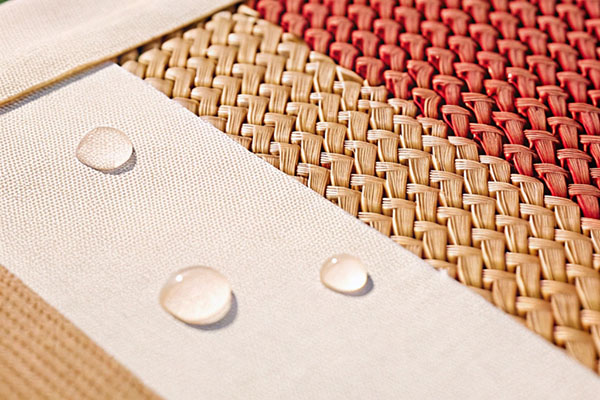Polyester is one of the most popular fabrics used in activewear, thanks to its durability, moisture-wicking properties1, and affordability. However, it has a common criticism: polyester isn’t as breathable as natural fabrics like cotton. This perception has led many to question its suitability for certain types of clothing, especially in hot or humid conditions.
Polyester is not inherently breathable because it is a synthetic fiber structure2 with tightly woven fibers that trap heat and reduce airflow. While modern polyester blends and treatments improve ventilation, the fabric’s core structure limits its natural breathability.
In this article, we’ll explore why polyester is often considered less breathable, the science behind its structure, and how advancements in fabric technology are addressing this issue.

What Does "Breathability" Mean in Fabrics?
Breathability refers to a fabric’s ability to allow air to circulate and moisture to escape. It’s a critical factor for comfort, especially in hot or sweaty conditions.
Key factors affecting breathability:
- Airflow: The ease with which air passes through the fabric.
- Moisture Management: The ability to wick sweat and allow evaporation.
- Heat Retention: Fabrics that trap heat can feel less breathable.
Why Is Polyester Not Naturally Breathable?
Polyester’s lack of breathability stems from its synthetic composition and tightly woven fibers.
1. Synthetic Fiber Structure
Polyester is made from petroleum-based polymers, creating fibers that are non-porous and less absorbent than natural materials like cotton or wool. This means:
- It doesn’t allow air to pass through easily.
- It retains heat, making it feel stifling in warm conditions.
2. Tight Weave
Polyester fabrics are often woven tightly to enhance durability and water resistance. However, this tight weave also limits airflow, contributing to its reputation for being less breathable.
3. Sweat Trapping
While polyester is moisture-wicking, it can also trap sweat against the skin in poorly designed garments, leading to discomfort.
How Is Polyester Improved for Breathability?
Advancements in textile technology have significantly improved polyester’s breathability, making it more suitable for activewear and everyday clothing.
1. Blends with Other Fabrics
Polyester is often blended with natural fibers like cotton or bamboo to enhance breathability while retaining its durability.
2. Mesh and Perforated Designs
Incorporating mesh panels or perforations into polyester garments increases ventilation, allowing air to circulate better.
3. Moisture-Wicking Treatments
Modern polyester fabrics are treated with moisture-wicking finishes that draw sweat away from the skin and promote evaporation, reducing the perception of poor breathability.
4. Lightweight Constructions
Using lightweight polyester reduces its density, improving airflow and overall comfort.
Comparing Polyester to Other Fabrics
| Fabric | Breathability | Moisture-Wicking | Durability |
|---|---|---|---|
| Polyester | Moderate (when untreated) | High (with treatments) | High |
| Cotton | High | Low | Moderate |
| Nylon | High | High | Very High |
| Bamboo | High | Moderate | Moderate |
| Wool | Moderate | High | High |
When Is Polyester a Good Choice?
Despite its limitations, polyester remains a popular choice for many types of clothing, including activewear and outdoor gear.
1. High-Intensity Workouts
Polyester’s moisture-wicking and quick-drying properties make it ideal for running, cycling, and gym sessions.
2. Outdoor Activities
Polyester’s durability and resistance to shrinking or wrinkling make it a go-to fabric for hiking, camping, and other outdoor sports.
3. Cold Weather Gear
Polyester is often used as a base layer or insulation in cold-weather clothing due to its ability to retain heat.
When Should You Avoid Polyester?
Polyester may not be the best option in certain scenarios:
1. Hot, Humid Conditions
Without proper ventilation, polyester can feel hot and sticky in warm climates.
2. Skin Sensitivities
Some people find polyester irritating to the skin due to its synthetic nature.
Tips for Improving Polyester’s Breathability
If you prefer polyester for its durability and moisture-wicking benefits but want to enhance its breathability, here’s how:
1. Choose Blended Fabrics
Look for polyester-cotton or polyester-bamboo blends that combine breathability with polyester’s performance.
2. Look for Ventilated Designs
Opt for clothing with mesh panels or perforated areas to improve airflow.
3. Wear Lightweight Garments
Select lightweight polyester pieces that reduce the density of the fabric.
4. Layer Strategically
In hot weather, pair polyester with a breathable outer layer or wear it as a base layer in cooler conditions.
Innovations in Polyester Fabrics
Modern innovations are addressing polyester’s breathability issues, making it more competitive with natural fabrics.
1. Microfiber Polyester
microfiber polyester3 has finer threads, increasing its breathability while retaining moisture-wicking properties.
2. Recycled Polyester
recycled polyester4 is not only eco-friendly but often treated with technologies that enhance ventilation and comfort.
3. Smart Fabrics
Some polyester garments now incorporate temperature-regulating or sweat-absorbing treatments to improve overall breathability.
Why Polyester Is Still a Popular Choice
Despite its breathability challenges, polyester remains widely used due to its many advantages:
1. Durability
Polyester withstands frequent washing, stretching, and wear, making it a long-lasting fabric.
2. Versatility
It’s suitable for a wide range of applications, from athletic wear to everyday clothing.
3. Cost-Effectiveness
Polyester is affordable compared to many natural and high-performance fabrics, offering good value for money.
Conclusion
Polyester’s reputation for being less breathable stems from its synthetic structure and tight weave, which can trap heat and limit airflow. However, advancements in fabric technology, such as moisture-wicking treatments1 and blends with natural fibers, have significantly improved its performance. While not ideal for all situations, polyester remains a reliable, durable, and versatile choice for activewear and casual clothing. By understanding its strengths and limitations, you can make informed decisions about when and how to incorporate polyester into your wardrobe.













